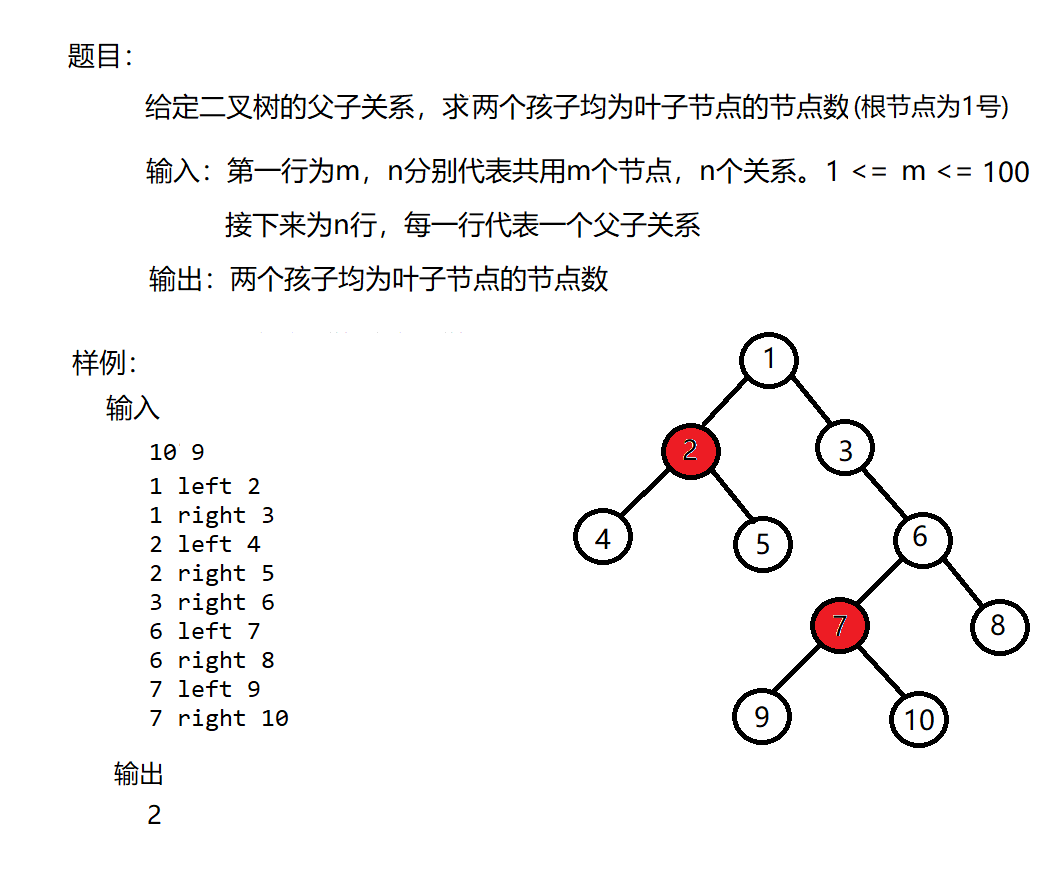
题目分析
遇到树形的问题,肯定要想到深搜和广搜,但是这个题目并不是一个树,只是一些邻接关系,没有left和right节点。如何转换到树的思想?当然可以创建树,但是还需要写递归创建树结构,思路不是非常好,小伙伴们能否使用数组容器实现呢?
DFS
我们可以使用二维数组保存,第一个维度大小是101,代表最多101个结点,第二个维度大小是2,分别代表左孩子和右孩子。因为节点从1开始,因此我们初始值设为0,进行DFS,当某个节点的两个孩子都不为0,并且每个孩子的两个孩子都为0,则计数器+1。算法的**时间复杂度为$O(n)$,空间复杂度为$O(n)$**。
1 | import sys |
BFS
思路和DFS相同,只是搜索方式是按层搜索,直接看代码即可。算法的**时间复杂度为$O(n)$,空间复杂度为$O(n)$**。
1 | import sys |
数学
严格意义来说不是一种数学推导,但是又具有数学的逆向思维思路,勉强归为数学部分吧。
我们将每一个关系读入,将父节点保存在父节点哈希表中,将子节点加入到子节点哈希表中,让子节点哈希表减父节点哈希表,则可以得到叶子节点的哈希表。并且在读入时维护一个从子节点指向父节点的字典。我们对每个叶子节点寻找其父节点,如果某个父节点出现两次,说明该父节点有两个叶子节点,给计数器+1即可。在Python中可以from collections import Counter,这时一个计数器,当某个父节点的计数器值为2时,说明该父节点是满足条件的。算法的**时间复杂度为$O(n)$,空间复杂度为$O(n)$**。
1 | import sys |
刷题总结
这时一种BFS和DFS的变形题目,通过数组记录父子关系,这种题和leetcode的题型不同,因为leetcode是只需要写函数实现,因此输入输出已经定义好了树形结构,直接搜索即可。而牛客网的题型需要自己读入数据,如果需要创建树结构,则需要自己定义构造函数,所以并不是很方便,这时候通过其他方式保存树结构就非常重要。